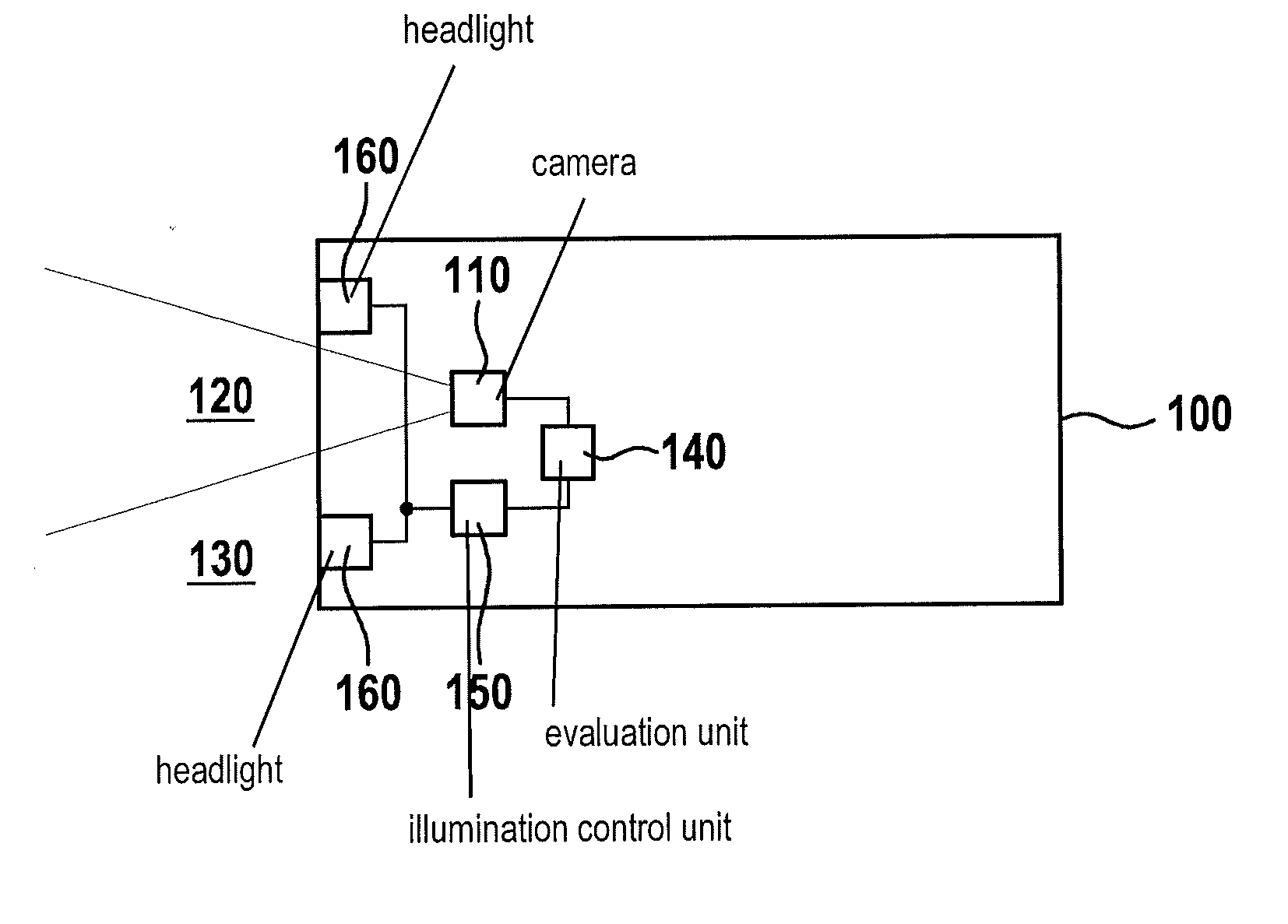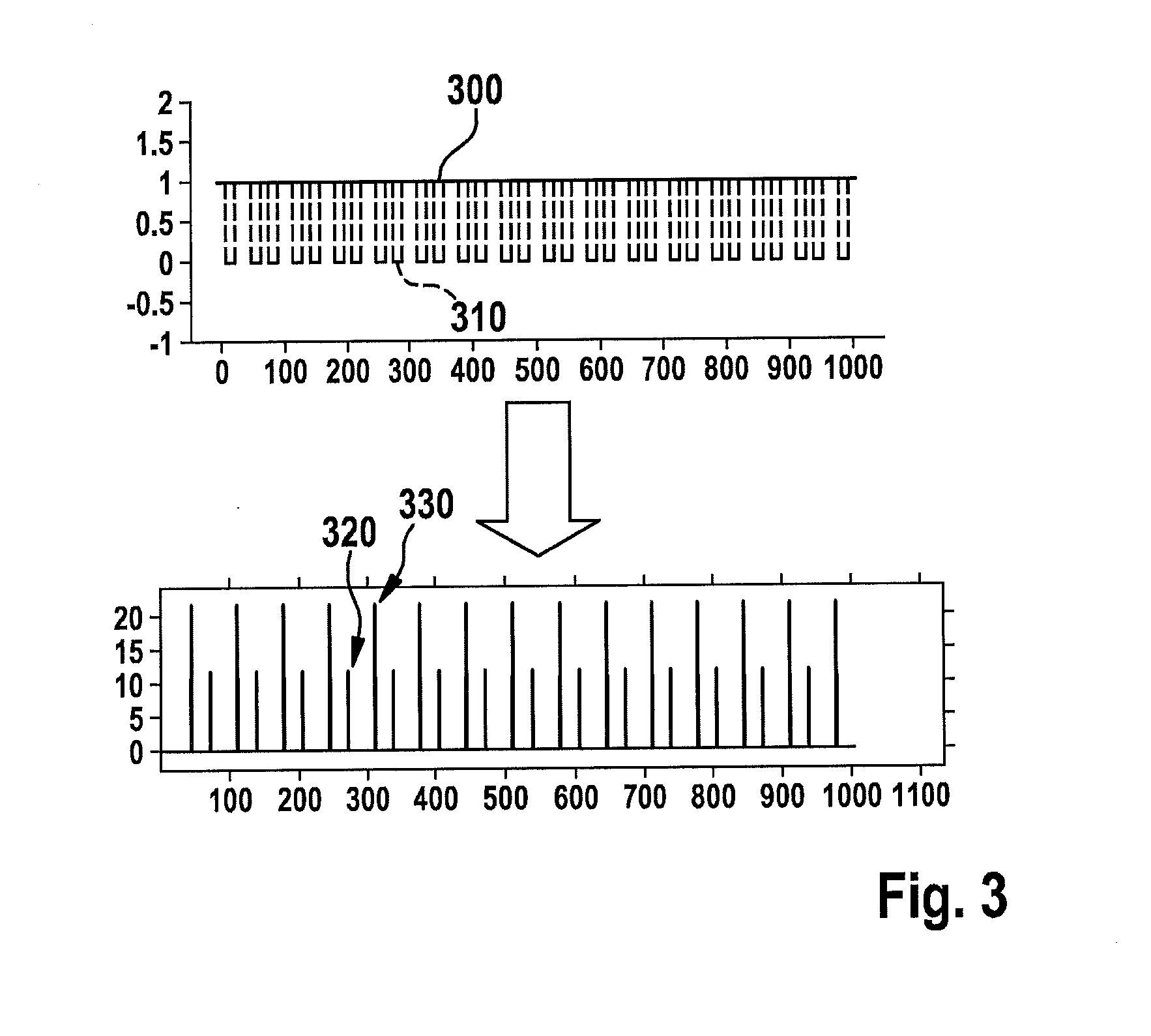Method and device for detecting objects in the surroundings of a vehicle
a technology for detecting objects and surroundings, applied in vehicle headlamps, instruments, transportation and packaging, etc., can solve the problems of glare and significant danger to the safety of the host vehicle, and achieve the effects of short exposure time, high light intensity, and short exposure tim
- Summary
- Abstract
- Description
- Claims
- Application Information
AI Technical Summary
Benefits of technology
Problems solved by technology
Method used
Image
Examples
Embodiment Construction
[0037]In the description below of preferred exemplary embodiments of the present invention, the same or similar reference numerals are used for the elements that are shown in the various figures and act similarly, so that a repeated description of these elements has been dispensed with.
[0038]In vehicle detection at dark, different requirements on an image evaluation system are made, which, in the case of a single exposure time of the image of a camera are able to be satisfied only by using compromises. In particular, distant, and thus comparatively dark rear lights of preceding vehicles are to be detected exactly the same as oncoming traffic, all at different distances. This makes it a condition that, on the one hand, the evaluation system should be very sensitive to dark objects and also robust to halation from close oncoming traffic. These two borderline cases may particularly advantageously be satisfied using a multi-modal, but at least bimodal camera regulation: in an image that...
PUM
 Login to View More
Login to View More Abstract
Description
Claims
Application Information
 Login to View More
Login to View More - R&D
- Intellectual Property
- Life Sciences
- Materials
- Tech Scout
- Unparalleled Data Quality
- Higher Quality Content
- 60% Fewer Hallucinations
Browse by: Latest US Patents, China's latest patents, Technical Efficacy Thesaurus, Application Domain, Technology Topic, Popular Technical Reports.
© 2025 PatSnap. All rights reserved.Legal|Privacy policy|Modern Slavery Act Transparency Statement|Sitemap|About US| Contact US: help@patsnap.com



